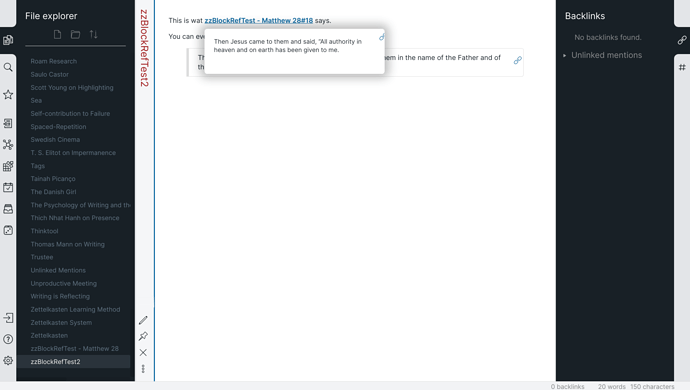There are a few use cases where it is not that simple without a better block implementation. For example, you can quote Matthew 28:18 by doing this: [[Matthew 28#18]].
You can even trasnclude directly the content of Matthew 28:19.
What you can not do, though is to know exactly how many references you have to Matthew 28:18. The current implementation only allows you to see the pages that link to [[Matthew 28]] and not specifically to [[Matthew 28#18]] or [[Matthew 28#19]].
Header reference and header transcusion are great first steps. As I mentioned on the feature request header:
Hopefully this clarified a bit more the request.


